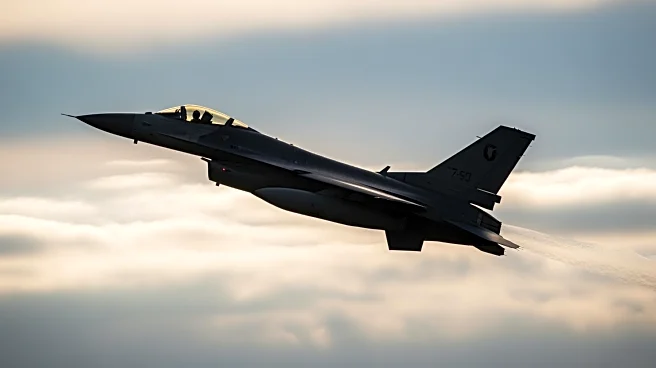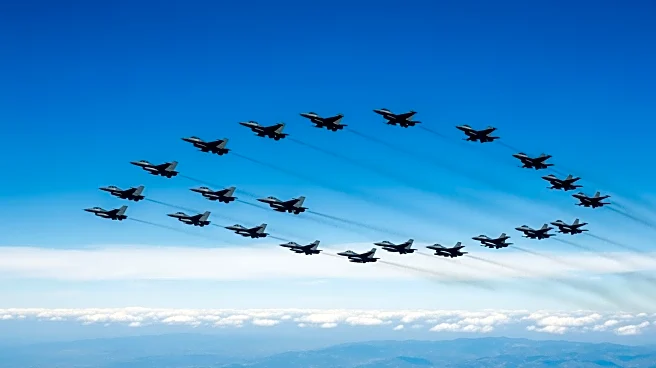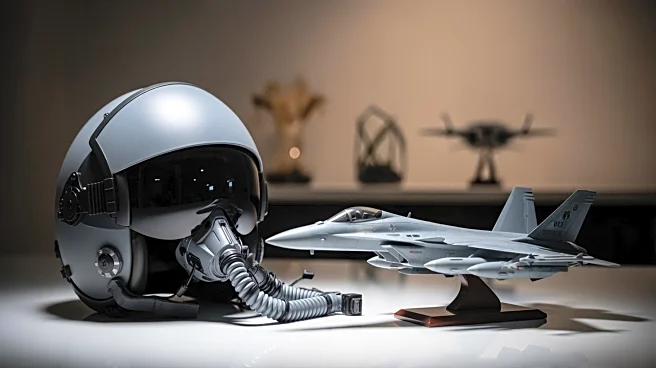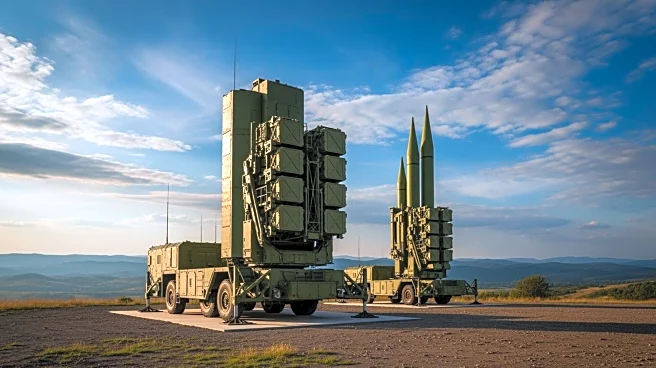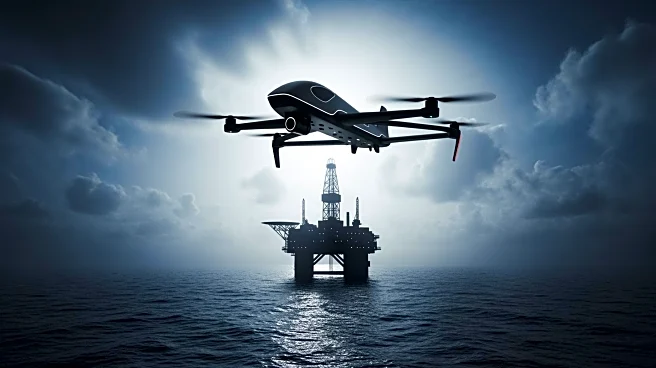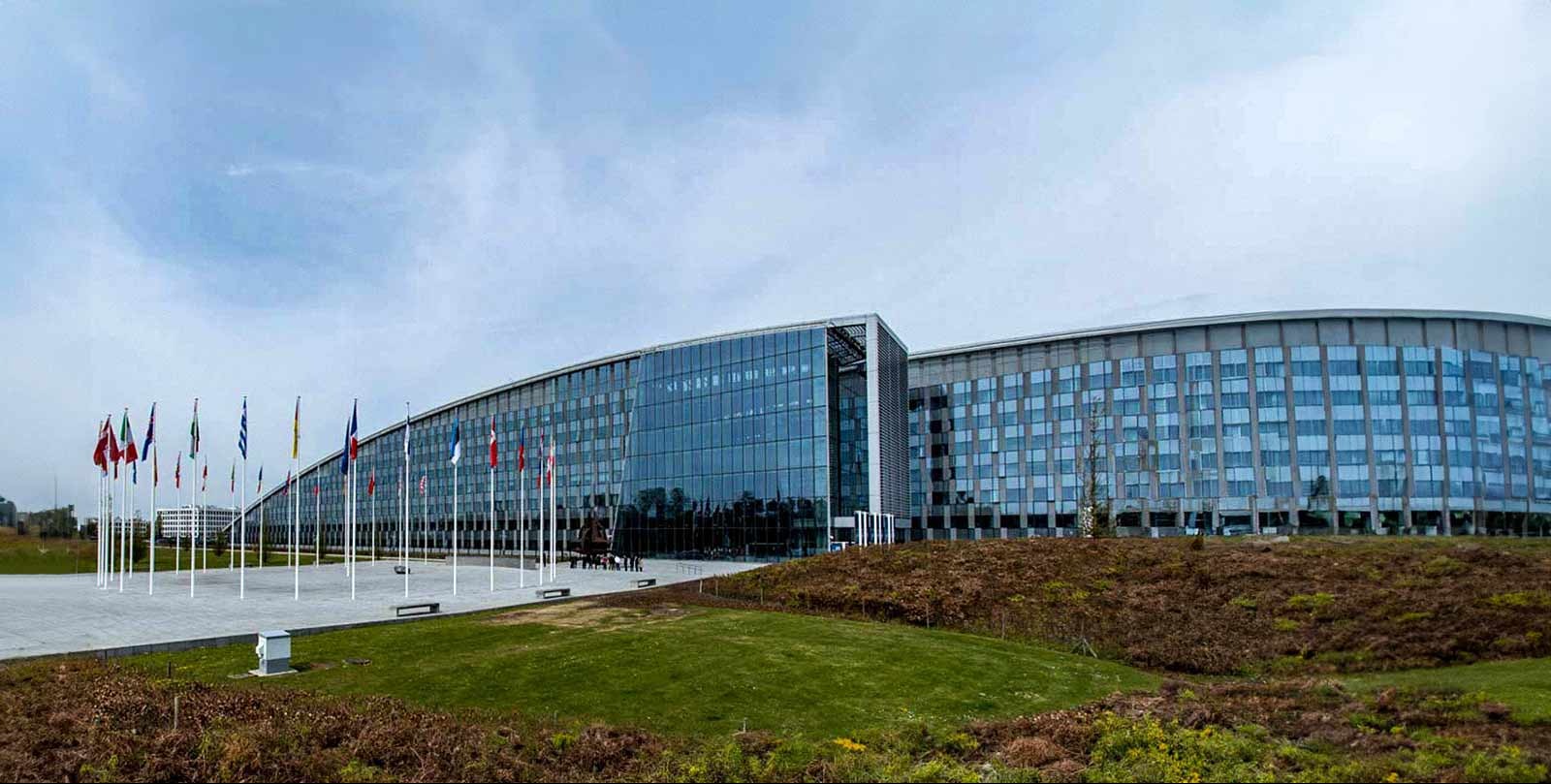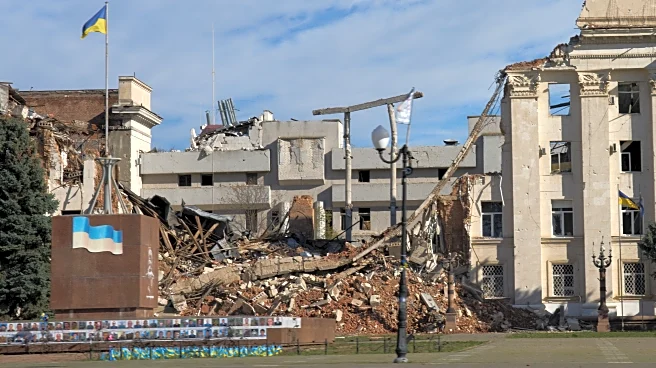What's Happening?
Romania has formally acquired 18 F-16 fighter jets from the Netherlands for a symbolic price of one Euro. These aircraft will be used at the European F-16 Training Center (EFTC) in Romania to train both
Romanian and Ukrainian pilots. The transfer was facilitated by the Netherlands' transition to the F-35A, which has replaced the F-16 in their fleet. The EFTC, located at the 86th Air Base in Fetești, Romania, provides a comprehensive training program for F-16 pilots, ensuring standardized training across NATO and Ukrainian forces. The Romanian Ministry of Defense emphasized the strategic importance of this center, given Romania's position in the Black Sea region and the current geopolitical climate.
Why It's Important?
This development is significant as it strengthens NATO's training capabilities and enhances Ukraine's defense readiness amid ongoing tensions with Russia. The EFTC serves as a critical hub for cross-border military cooperation, bolstering security and solidarity within NATO. By training Ukrainian pilots, the center directly supports Ukraine's efforts to defend against Russian aggression. The acquisition also highlights Romania's growing role in NATO's eastern defense strategy, as it prepares to transition to more advanced aircraft like the F-35 in the future. This move could potentially lead to further military collaborations and support for Ukraine from NATO allies.
What's Next?
The EFTC will continue to train pilots from Romania and Ukraine, with the possibility of expanding its role as more NATO countries retire their F-16 fleets. Romania's future plans to introduce the F-35 after 2030 could lead to the eventual transfer of these F-16s to Ukraine, further enhancing its air defense capabilities. The ongoing training and support from NATO allies are expected to play a crucial role in Ukraine's military strategy and its ability to counter Russian threats.
Beyond the Headlines
The establishment of the EFTC in Romania underscores the shifting dynamics within NATO, as member countries adapt to new military technologies and geopolitical challenges. The center not only provides essential training but also symbolizes the commitment of NATO allies to support Ukraine in its conflict with Russia. This initiative may also influence other NATO members to enhance their military training programs and collaborations, potentially leading to a more unified and robust defense posture in Europe.
